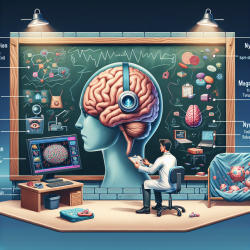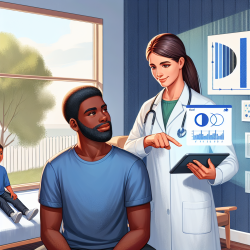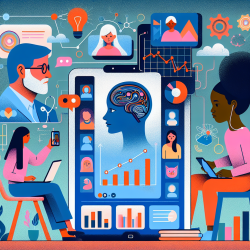Introduction
In the ever-evolving field of healthcare, the integration of technology has become pivotal in bridging the gap between research and practice. The study "Clinicians’ Expectations of Web 2.0 as a Mechanism for Knowledge Transfer of Stroke Best Practices" offers valuable insights into how Web 2.0 platforms can facilitate this process, particularly in stroke care. This blog explores how practitioners can harness these findings to enhance their skills and improve patient outcomes.
Understanding Web 2.0's Role in Knowledge Transfer
The study highlights that Web 2.0 platforms, with their interactive capabilities, present a promising avenue for knowledge transfer among health professionals. These platforms can foster virtual communities of practice, enabling clinicians to share insights, discuss best practices, and stay updated on the latest research. For practitioners, engaging in such communities can lead to improved clinical decision-making and patient care.
Key Findings from the Study
- Perceived Usefulness: Clinicians view Web 2.0 platforms as beneficial for knowledge transfer, enhancing the quality of care and efficiency in clinical tasks.
- Ease of Use: The user-friendliness of these platforms is crucial. A simple, intuitive interface can encourage more practitioners to participate actively.
- Time Constraints: Despite recognizing the benefits, many clinicians cite lack of time as a barrier to using Web 2.0 platforms effectively.
- Technological Skills: Limited technological skills can hinder the adoption of Web 2.0 tools, emphasizing the need for training and support.
Implementing Web 2.0 in Practice
For practitioners looking to improve their skills, the following strategies can be considered:
- Join Virtual Communities: Engage with online forums and discussion groups related to stroke care. These platforms can provide access to a wealth of knowledge and peer support.
- Leverage Interactive Tools: Utilize blogs, podcasts, and webinars to stay informed about the latest developments in stroke care.
- Seek Training Opportunities: Participate in workshops or webinars to enhance your technological skills and comfort with Web 2.0 tools.
- Manage Time Effectively: Allocate specific times for engaging with Web 2.0 platforms to ensure consistent participation without overwhelming your schedule.
Encouraging Further Research
While the study provides a foundation, further research is necessary to explore the adoption of Web 2.0 across different regions and populations. Understanding the diverse needs and barriers faced by practitioners can lead to more tailored and effective solutions.
To read the original research paper, please follow this link: Clinicians’ Expectations of Web 2.0 as a Mechanism for Knowledge Transfer of Stroke Best Practices.










